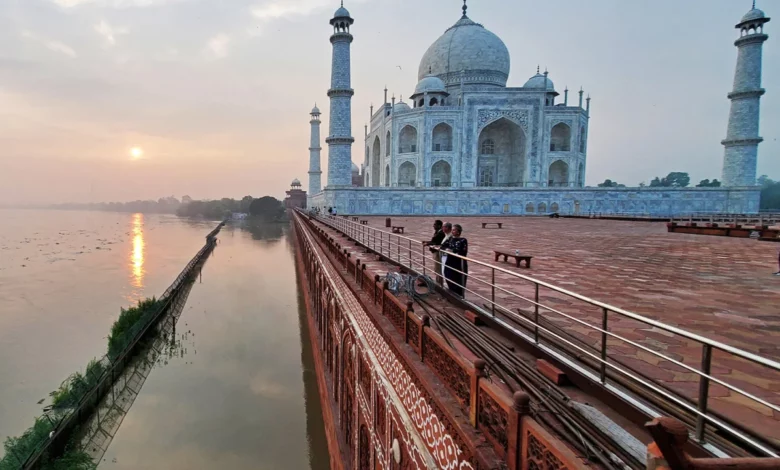
Floodwaters from the Yamuna River lapped at the compound walls of the monument and major tourist attraction on Tuesday, videos and photos on social media showed.
A garden located behind the Taj Mahal was also seen submerged in floodwater. However, the Archaeological Survey of India (ASI), which maintains the heritage site, said it is not under threat from the current floods, CNN affiliate CNN-News 18 reported.
Experts said it is rare for floodwaters to reach the outer walls of the complex, which was built near the city of Agra in the northern state of Uttar Pradesh in the 17th century by a Mughal emperor to honor his wife who died in childbirth. Millions of tourists visit the site each year.
While floods occur regularly in the area during India’s monsoon season from June to September, experts say climate change is increasing their frequency and severity.
The Yamuna River – a tributary of the Ganges – has reached its highest level on record, authorities said last week, prompting mass evacuations as northern states report dozens of deaths from the heavy flooding.
The Yamuna, which flows about 855 miles (1,376 kilometers) south from the Himalayas through several states, rose to 208.57 meters (about 684 feet) as of last Thursday, officials said.
India, the world’s most populous nation, is one of the countries worst affected by the climate crisis, according to the Intergovernmental Panel on Climate Change (IPCC) – potentially affecting 1.4 billion people nationwide.
Several parts of northern India, including Agra, remain at high risk of flooding in the coming weeks due to continuous heavy rainfall and water being released from barrages, according to Indian authorities.
Scientists have long warned about the damaging impacts of climate change, which has brought deadly combinations of extreme erratic weather – scorching summer heat followed by record rainfall resulting in severe floods and landslides across much of Asia.
“There is no stronger sign that climate breakdown is here,” NASA climate scientist Peter Kalmus told CNN.
“The rest of this summer should serve as a huge wake up call – everything gets worse from here and every summer will be worse than the one before. Billions of lives remain at risk.”
The Taj Mahal has already endured years of air pollution, insects and tourist crowds that have damaged its iconic mausoleum and caused parts of its exterior to turn yellow-green.
Meanwhile, dozens of World Heritage sites face the risk of floods and erosion as extreme weather becomes more intense and frequent.
Ancient Buddhist cave murals and statues along China’s Silk Road, dating back to the 4th century, are under “direct threat” from extreme rainfall brought by climate change, researchers found. Artworks in some caves are already showing signs of deterioration and some artifacts could be gone in a few years, they warned.
And in South Korea, heavy rain has damaged dozens of cultural heritage sites, the country’s Cultural Heritage Administration (CHA) said Tuesday.




